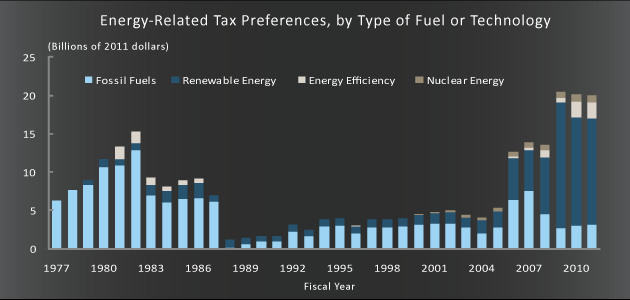37 item(s) were returned.
Chief Strategy Officer and SVP for Policy
American Council On Renewable Energy (ACORE)
With the recent growth of the distributed generation energy market and incentives for customers to produce their own energy and sell excess energy back to the grid, known as Net Energy Metering (NEM) in place in over 40 states, the traditional utility model has come into question. Facing competition from those who generate a portion of their own power and an associated loss in revenues, there is growing speculation that the traditional utility will struggle to survive if it doesn’t adapt to new market conditions. The Edison Electric Institute deemed rooftop solar “disruptive” – a threat to the traditional utility… [more]
View InsightExecutive Director
The Solar Foundation
There is an investment vehicle available to oil and natural gas development that is not available to renewable energy resource projects. There is a current effort in Congress to change that situation. Most political leaders today claim they support an “all of the above” energy strategy. Yet solar and other renewable energy resources are currently restricted by the lack of access to master limited partnerships (MLPs). MLPs are business structures that are taxed as a partnership, but whose ownership interests are traded like corporate stock on a market. MLPs have the advantage of avoiding double taxation. Projects done through MLPs… [more]
View InsightProfessor of Public Policy
Georgia Institute of Technology
Thanks to breakthroughs in seismic imaging, horizontal drilling and hydraulic fracturing, the US in 2012 reduced its reliance on much dirtier coal by shifting to gas-fired power plants. This trend is expected to continue, spurred by low gas prices and increased regulation on coal. The move to shale gas is being heralded as a key to economic prosperity and a clean energy future. But there are other options for displacing baseload electricity from retired coal plants, the principals being nuclear, renewables and energy efficiency. Will the gas bonanza enable or postpone the transition to these cleaner options? While natural gas… [more]
View InsightLast week Senator Lisa Murkowski (R-AK), the senior Republican on the Senate Energy and Natural Resources Committee, published a blueprint for energy policy, titled “Energy 20/20: A Vision for America’s Energy Future.” The blueprint offers ideas to “align federal policy with… our national interest to make energy abundant, affordable, clean, diverse, and secure.” Among the main ideas in Sen. Murkowski’s blueprint are: Establishing a national goal to become independent of OPEC imports by 2020 by increasing domestic oil, biofuel and synthetic fuel production. Approving the Keystone XL pipeline. Opening the Arctic National Wildlife Refuge to oil and gas drilling and… [more]
View InsightEarlier this year the U.S. imposed tariffs on Chinese solar products after the U.S. Commerce Department deemed that China provided Chinese solar panel manufacturers unfair subsidies, resulting in artificially low prices. These low prices, it was argued, made it difficult for more expensive American solar products to compete in global and domestic markets. At the time, opponents of the tariffs argued that the move would increase prices, eliminate jobs and threaten the U.S. solar industry. Recent analysis shows solar prices continue to fall even though Chinese manufacturers, eager to stay in the U.S. market, are buying more expensive components outside… [more]
View InsightMassachusetts-based solar panel developer Konarka Technologies Inc. has filed for bankruptcy. The company received $1.5 million in grants from the state while Mitt Romney was governor. President Obama’s reelection campaign is casting this development as “Romney’s Solyndra,” even as Romney’s campaign continues to attack the president for his role in the Solyndra scandal. Konarka and Solyndra are two high profile U.S. solar firms that have filed for bankruptcy or otherwise collapsed since 2011, but there are a number of others: Evergreen, SpectraWatt, Energy Conversion Devices Inc. Meanwhile, other firms, such as First Solar, have forecast weak market demand for 2012, as European nations reduce solar incentives and… [more]
View InsightLast week, DOE announced plans to continue its provision of loan guarantees for approved renewable energy projects. The announcement comes seven months after the controversy surrounding the agency’s loan to Solyndra, the California-based solar manufacturer which filed bankruptcy after receiving a $535 million DOE loan guarantee. Solyndra’s loan guarantee was administered under a program authorized by Section 1705 of the American Recovery and Reinvestment Act of 2009, which elapsed in September 2011. The new loans will be directed under a program created by section 1703 of the Energy Policy Act of 2005. The Section 1703 program has $34 billion in… [more]
View InsightHistorically, widespread uptake of renewable energy has been limited by relatively high costs as compared to traditional energy sources. A 2011 IEA report argued that “renewable energy … is becoming cost-competitive in an increasingly broad range of circumstances, in some cases providing investment opportunities without the need for specific economic support.” Several recent trends, and recently announced business ventures, seem to support the IEA’s finding that some renewable energy sources are approaching cost-competitiveness. Prices for distributed solar have plummeted recently – due largely to economies of scale, government support and policy-driven demand – leading in 2011 to a record 1,855… [more]
View InsightLast year, some U.S.-based solar manufacturers filed a complaint, leading the U.S. Commerce Department to conclude that Chinese solar panel manufacturers received unfair subsidies from the Chinese government. Consequently, Chinese solar products were priced artificially low, giving them a competitive advantage in the global market. To address this issue, the U.S. government will be imposing a tariff on Chinese solar products ranging from 2.9% to 4.37%. The aim is to increase the prices of these products and create a fairer market for U.S. manufacturers. In here, it is worth noting that the implementation of tariffs may have an impact on… [more]
View InsightA recent report from the Congressional Budget Office found that in 2011 federal support for fuel and energy technology development and production was $24 billion. Of this, $20.5 billion, or 85%, was in the form of “tax preferences—such as special deductions, special tax rates, tax credits, and grants in lieu of tax credits”; the remainder was made up by the Department of Energy’s spending programs. Of the total $24 billion provided in 2011, about $16 billion, or 78%, went toward support of renewables, energy efficiency, and alternative vehicles. According to the report, historically energy-related tax preference support was “primarily… [more]
View Insight





